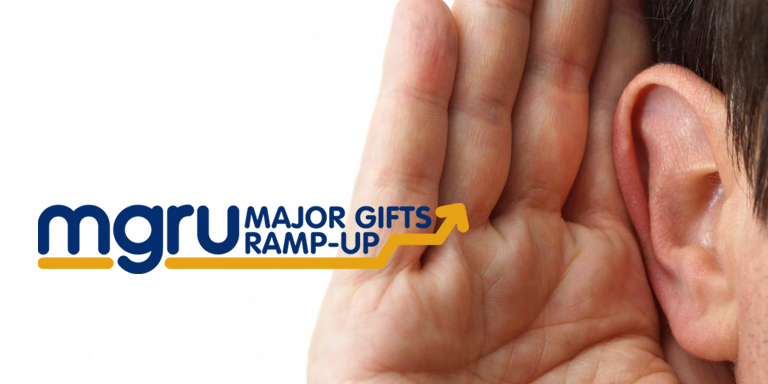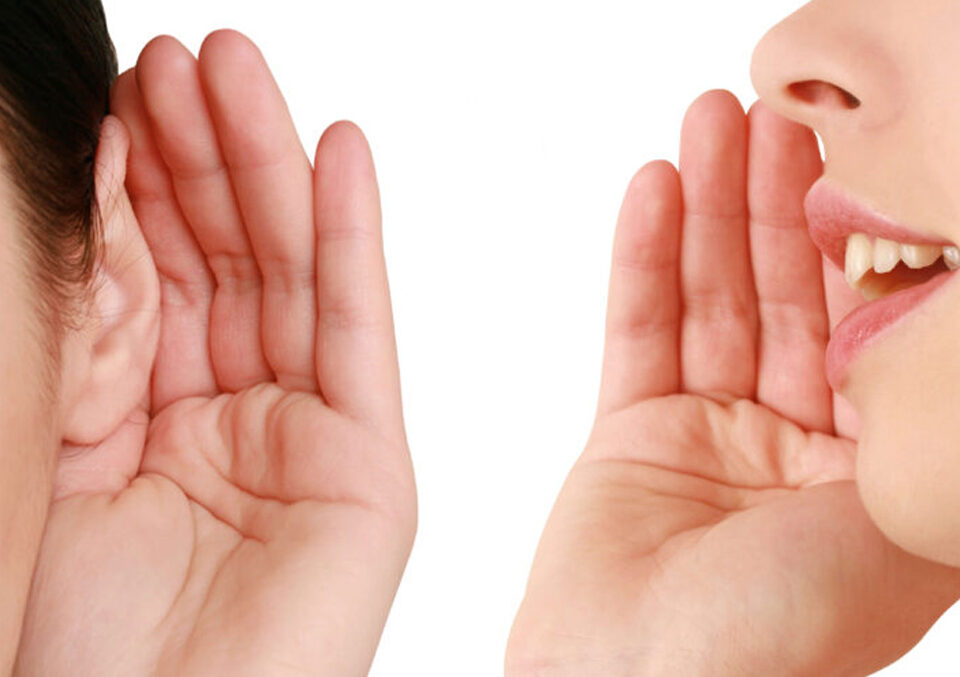
Major Donors, “Listen Your Way To Money” is Jim Eskin’s take on how you can help a donor accomplish their personal goals by investing in your mission. Here’s this veteran fundraiser has to share:
Most people outside of the profession think fundraisers need to be very adept at the art of speaking, glib and persuasive. Make no mistake about it, successful fundraisers need to be excellent communicators — both orally and in writing.
But I place the art of active listening at the very top of the fundraiser’s must-have skill set. This will empower them to earn being liked, known and most importantly, trusted by the donor prospect.
In a nutshell, if we can hold enough quality conversations with donor prospects, they will tell us how much, when and for what purpose they will share the precious gifts of time and money.
Laura Fredricks, Founder of the Expert on the ASK, suggests this formula for meetings: the donor speaks 75% of the time, while the fundraiser speaks 25% of the time.
Among other things, this puts a huge premium on the finite time fundraisers have to speak.
Listening demonstrates that we value and are genuinely interested in what the other party is thinking. What is active listening? Most people confuse passive hearing with listening to someone. There is a big difference, and donors can quickly and thoroughly sense it.
Major Donors, “Listen Your Way To Money” – Jim Eskin
Based on hundreds of meetings and solicitations with donor prospects, here are my primary 10 recommendations on being an effective active listener.
- Enter every meeting with the top agenda item being to learn as much as possible about the donor. What are their values, interests and priorities? Any discussion of money should be left for much later down the road, after a solid relationship (no, make that a solid friendship) has been clearly developed.
- Watch for nonverbal clues and reactions that count much more than words. Dr. Albert Mehrabian from UCLA’s Department of Psychology and author of Silent Messages, concluded that the relative impact of messages is 7 percent verbal, 38 percent vocal and 55 percent visual. For this reason alone, it is essential to maintain uninterrupted eye contact throughout the meeting. You need to be on the alert for all body and facial gestures. If you’re lucky enough to be in their home or office, look for clues like photos, books and personal mementos which will reveal strong clues into their personalities.
- I understand that many people like to take notes to capture the highlights of the meeting. To maintain the all-important eye contact, I suggest that either a second non-profit representative at the meeting serve as the scribe, or if the fundraiser is by him or herself, that they immediately craft their notes after they have left the donor.
- Many of the same rules apply for virtual communication, primarily via video-conferencing. Instead of eyeball-to-eyeball contact, it is essential to effectively maintain a similar connection through screen-to-screen contact. By the way, virtual meetings tend to be much more exhausting than in-person, so plan them to be about two thirds the duration of an in-person meeting.
- Probe for meaning. If you don’t fully understand what the donor means, ask them to expand and clarify their messages.
- I don’t care how much work has gone into your collateral material, or how beautiful it is. Don’t ask the donor to follow along as you review its highlights. Marketing material should be presented at the conclusion of the meeting and speak for the non-profit when your representatives are no longer present.
- Your questions play a huge role in deepening your understanding. Go in with a carefully crafted and honed list. There are many questions suitable to discover the donor’s values, priorities and interests. Here are some of my favorites:
- (a) What has been your most satisfying philanthropic experience? And, why?
- (b) What do you remember about your first gift to a non-profit, both good and bad?
- (c) Putting the topic of money aside, what changes would you like to see our non-profit make happen?
- (d) If you could be our CEO for a day, what would you concentrate on?
- (e) A year from now, how could you tell that your gift to us was a prudent investment?
- (f) Who are some of your favorite non-profits?
- (g) How do you prefer that we communicate with you?
- (h) How do you prefer to be recognized for your gifts?
- (i) What do you think is the most pressing challenge facing our community?
- (j) This question might not be suitable for all meetings: Would you be comfortable with us making a solicitation of you at our next meeting?
- Even if the donor can and should be speaking the majority of the time, it is the fundraiser’s responsibility to manage time. (In my experience, we always seem to run out of it.) It might very well be necessary for the fundraiser to steer the conversation to a different topic, by saying something like: we would like to hear more about your opinions on subject X.
- Close the meeting on a high note, by repeating areas of agreement, and also recap next steps particularly the timing of next meeting if an ask hasn’t been brought to closure.
- As soon as possible e-mail a summary of the meeting demonstrating how soundly you were listening to the donor and understand their perspective. My personal favorite is also sending a brief handwritten note thanking the donor for their time. How many handwritten notes do you receive? This will enable you to really stand out.
Jim Eskin’s consulting practice Eskin Fundraising Training builds on the success of his more than 150 fundraising workshops and webinars and provides the training, coaching and support services that non-profits need to compete for and secure private gifts. He has authored 100 guest columns that have appeared in daily newspapers, business journals and blogs across the country. He publishes Stratagems, a monthly e-newsletter exploring timely issues and trends in philanthropy. Sign up here for a free subscription. He is author of 10 Simple Fundraising Lessons, which can be purchased here.
Major Donors, “Listen Your Way To Money” – Jim Eskin was first posted at Major Gifts Ramp-Up.
For more articles like Major Donors, “Listen Your Way To Money” – Jim Eskin and other posts about major gifts fundraising VISIT HERE.


